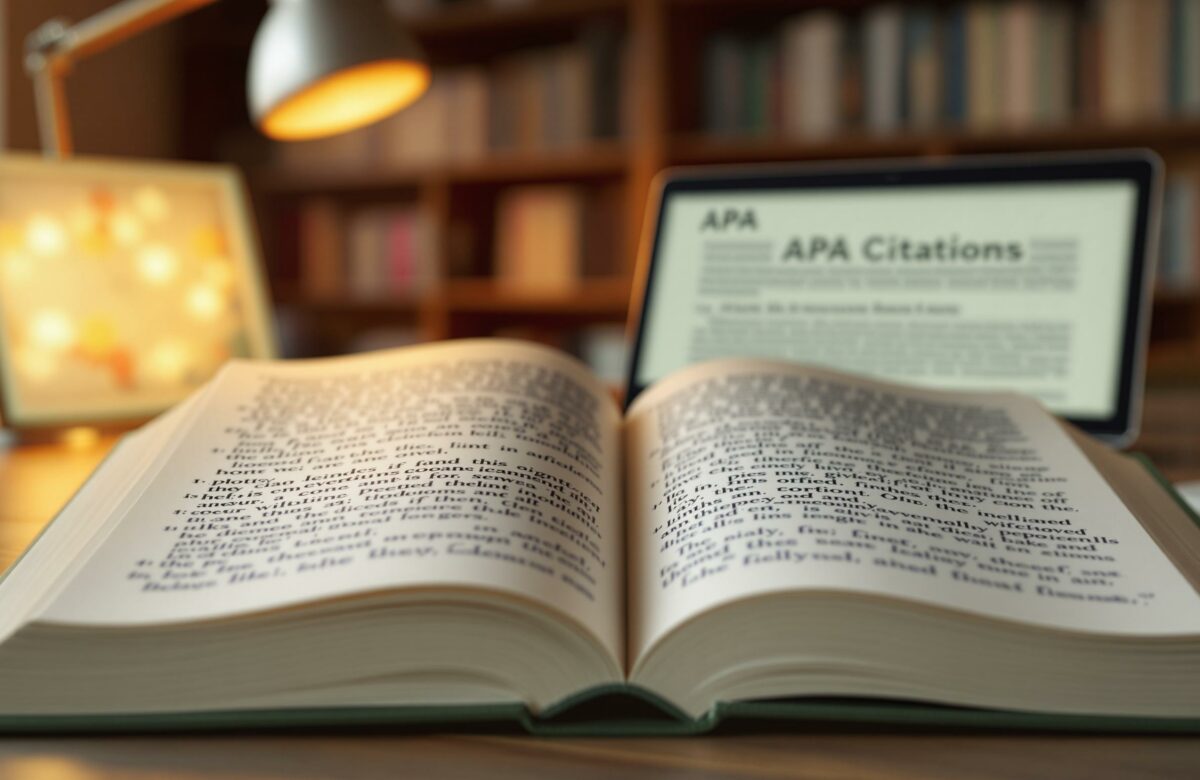Everything You Need To Know About Apa Paraphrasing And Citation
APA paraphrasing and citation are essential for clear, professional, and plagiarism-free academic writing. Here’s what you need to know:
- Paraphrasing: Restate ideas in your own words while preserving the original meaning. This demonstrates your understanding and avoids plagiarism.
- Read the source carefully.
- Change the sentence structure and vocabulary.
- Cite the source properly with the author and year.
- Citation Basics: APA uses two types of in-text citations:
- Narrative: Author’s name is part of the sentence.
- Parenthetical: Author and year in parentheses.
- For long paraphrases, cite the source at the start and again if it continues into another paragraph.
- Reference Lists: Include all sources in a structured list:
- Alphabetized by authors’ last names.
- Use proper formatting for books, journal articles, and online sources.
- Common Mistakes to Avoid:
- Partial changes to the original text.
- Skipping citations, even when paraphrasing.
- Misrepresenting the original meaning.
Why it matters: Proper APA writing builds credibility, ensures academic integrity, and is widely used in fields like psychology, education, and social sciences. Master these skills to write confidently and ethically.
APA Paraphrasing Basics

What is Paraphrasing?
Paraphrasing is the process of rephrasing someone else’s ideas in your own words while keeping the original meaning intact. It’s an essential academic writing skill that demonstrates understanding and allows you to incorporate ideas smoothly into your work.
Main Paraphrasing Rules
To paraphrase effectively and follow APA guidelines, keep these principles in mind:
- Understand the Source
Read the original text carefully to ensure you fully grasp the author’s message before attempting to rewrite it. - Rework Structure and Vocabulary
Go beyond swapping out words for synonyms. Change the sentence structure and express the ideas in a way that reflects your own writing style while staying true to the original meaning. - Match the Original Depth
Aim to keep your paraphrase similar in length to the original. Avoid oversimplifying or adding unnecessary detail. - Cite the Source Correctly
Always include an APA in-text citation with the author’s last name and publication year. Add page numbers if you’re referencing a specific part of the text.
Avoiding Common Mistakes
Partial Changes
Merely tweaking a few words or leaving most of the original structure intact can still be considered plagiarism.
Skipping Citations
Even if you’ve rewritten the content entirely in your own words, failing to credit the source is a serious error.
Altering the Meaning
Be cautious not to misrepresent the original intent. Here’s an example of proper paraphrasing using Franklin D. Roosevelt’s inaugural address, as shown by EasyBib:
Original text:
“This is preeminently the time to speak the truth, the whole truth, frankly and boldly. Nor need we shrink from honestly facing conditions in our country today. This great Nation will endure as it has endured, will revive and will prosper…”
Paraphrased version:
“In his inaugural address, Roosevelt encouraged Americans to face the difficult realities of the Great Depression head-on, while also expressing confidence in the nation’s ability to recover and thrive.”
Always compare your paraphrase with the original to ensure you’ve avoided copying unique phrasing, changing the meaning, or leaving out key details.
Paraphrasing is a skill that improves with time and practice. Once you’re confident in your paraphrasing, the next step is learning how to properly cite your sources in APA style.
APA Paraphrasing: Citation Guide
APA Paraphrasing Within Text
APA in-text citations use the author-date method. This means you include the author’s last name and the year of publication directly in your text. This approach keeps your writing clear and makes it easy for readers to find your sources.
For short quotes (under 40 words), include them within your text using quotation marks. Add the author, year, and page number in parentheses. Example:
“students often had difficulty using APA style, especially when it was their first time” (Jones, 1999, p. 199).
For long quotes (40 words or more), use a block quote format. Indent the entire quote 0.5 inches from the left margin, and don’t use quotation marks. Example:
The placebo effect, which had been verified in previous studies, disappeared when behaviors were studied in this manner (Miele, 1993, p. 276).
When paraphrasing, always credit the source. While page numbers are optional for paraphrases, including them can provide clarity. Example:
Jones (1999) noted that students often face challenges with APA citation practices, especially when learning the style for the first time (paras. 4-5).
Key Rules for In-Text Citations:
- Use “p.” for a single page and “pp.” for multiple pages.
- If no page numbers are available, use paragraph numbers (e.g., “para. 3”).
- For two authors, separate their names with “&” in parentheses (e.g., Smith & Jones, 2020).
- For three or more authors, list the first author followed by “et al.” (e.g., Johnson et al., 2018).
Once your in-text citations are ready, the next step is creating your reference list.
APA Paraphrasing: Creating Reference Lists
Your reference list should appear on a new page titled “References” (centered at the top). Follow these formatting guidelines:
- Double-space all entries.
- Alphabetize by the authors’ last names.
- Use a 0.5-inch hanging indent.
- Follow APA rules for capitalization and italicization.
Common Reference Formats:
- Journal Articles with DOI
Author, A. A. (Year). Title of article. Journal Name, Volume(Issue), page range. https://doi.org/xx.xxx
Example:Beattie, B. R., & LaFrance, J. T. (2006). The law of demand versus diminishing marginal utility. Review of Agricultural Economics, 28(3), 263–271. https://doi.org/10.1111/j.1467-9353.2006.00286.x
- Books
Author, A. A. (Year). Title of book. Publisher.
Example:Diaz-Rico, L. T. (2008). A course for teaching English learners. Pearson.
Citation Guidelines: Quoting and APA Paraphrasing
sbb-itb-32359dc
APA Paraphrasing: Step-by-Step Examples
This section builds on APA citation guidelines, offering examples of effective paraphrasing and proper citation.
Good vs. Bad Paraphrasing
Knowing how to paraphrase correctly is essential for academic writing. Here’s an example to highlight the difference between effective and ineffective paraphrasing:
Original Text:
“Homeless individuals commonly come from families who are riddled with problems and marital disharmony, and are alienated from their parents. They have often been physically and even sexually abused, have relocated frequently, and many of them may be asked to leave home or are actually thrown out, or alternatively are placed in group homes or in foster care. They often have no one to care for them and no one knows them intimately.”
Poor Paraphrasing:
“The homeless come from families with problems. Frequently, they have been physically or sexually abused, or have lived in group homes. Usually no one cares for them or knows them intimately (Rokach, 2005)”
This version is problematic because it sticks too closely to the original wording, shortens the text without fully reworking it, and doesn’t effectively synthesize the ideas.
Effective Paraphrasing:
“Many homeless experience isolation in part due to suffering from abuse or neglect during their childhood (Rokach, 2005)”
This version works well because it:
- Reorganizes the original content
- Uses new language to express the core idea
- Keeps the meaning intact while being concise
Mastering these distinctions is key to clear and accurate citation, as shown in the next section.
Citation Examples
Below are examples of how to handle different citation scenarios in APA format:
Single Author Citation:
- First mention: According to Murphy (2018), childhood victimization has a lasting impact on adult relationships.
- Subsequent mentions: The study highlighted troubling patterns in violence perpetuation (Murphy, 2018).
Multiple Author Citations:
- Two authors: Scheider and Nordheim (2021) highlighted the importance of individualized service plans for quality care.
- Three or more: Peterson et al. (2019) concluded that internet use affects college relationships.
Sample References
Here are examples of properly formatted references for common source types:
| Source Type | Format Example |
|---|---|
| Book (Single Author) | Waller, B. N. Consider ethics: Theory, readings, and contemporary issues (3rd ed.). Prentice Hall. |
| Journal Article | Murphy, L. Childhood and adolescent violent victimization and the risk of young adult intimate partner violence victimization. Violence & Victims, 26, 593-607. |
| Web Document | World Health Organization. (2013, August). The world health report 2013: Research for universal health coverage. http://www.who.int/whr/2013/report/en/ |
Helpful Tools and Methods For APA Paraphrasing
Building on the APA guidelines discussed earlier, these tools and techniques can make your writing process smoother and more efficient.
Using BeLikeNative for APA Paraphrasing

BeLikeNative is a Chrome extension that simplifies APA-compliant writing across platforms like Google Docs and Microsoft Word Online. It’s designed to help you maintain accuracy and consistency in your academic work.
Key features include:
- Smart Rephrasing: Adjust wording while keeping the academic tone and proper attribution intact.
- Character Counters: Monitor paraphrasing length (up to 6,000 characters with the Premium plan).
- Cross-Platform Support: Seamlessly works across various writing platforms.
- Language Settings: Fine-tune tone to meet academic standards.
It also offers clipboard integration, allowing you to rephrase text without losing citation structures.
Tips for Better APA Paraphrasing
Strong APA paraphrasing requires a mix of precision and clarity. Here’s how to do it effectively:
Before You Start
- Carefully read and understand the source material.
- Focus on noting key ideas rather than copying full sentences.
- Identify the main points you’ll need to convey.
While Writing
- Emphasize the primary ideas upfront.
- Change sentence structures and use different vocabulary.
- Simplify complex concepts into clear, straightforward statements.
After Writing
- Compare your paraphrase with the original to ensure it’s unique.
- Double-check the accuracy of the information.
- Confirm that citations are correctly formatted and placed.
Common Paraphrasing Patterns
Here are some common ways to rephrase text effectively:
| Original Structure | Paraphrasing Approach | Example Application |
|---|---|---|
| Active Voice | Change to passive | Original: “Researchers conducted the study” → Paraphrase: “The study was conducted” |
| Single Complex Sentence | Break into simpler sentences | Original: “The findings, which showed significant correlation, prompted further investigation” → Paraphrase: “The findings showed significant correlation. This led to additional research.” |
| Sequential Points | Rearrange the order of information | Original: “First A happened, then B, leading to C” → Paraphrase: “C resulted from the progression of B, which followed A.” |
These tools and techniques can help you create clear, accurate, and APA-compliant content with ease.
Conclusion
Learning APA paraphrasing and citation is key to producing clear and reliable writing. The American Psychological Association explains, “APA Style is used by writers in many disciplines around the world for concise, powerful, and persuasive scholarly communication”.
By following the guidelines shared earlier, you can develop strong paraphrasing and citation skills, which are essential for maintaining academic integrity. These techniques help writers combine information from various sources while ensuring proper credit is given. When paired with the strategies discussed in this guide, these skills support ethical and confident writing that aligns with scholarly expectations.
These abilities also go beyond academics. APA guidelines are widely recognized in fields like psychology, sociology, business, economics, and nursing. Mastering them can boost your professional credibility and demonstrate your expertise in handling information accurately, which is valuable in any career.


